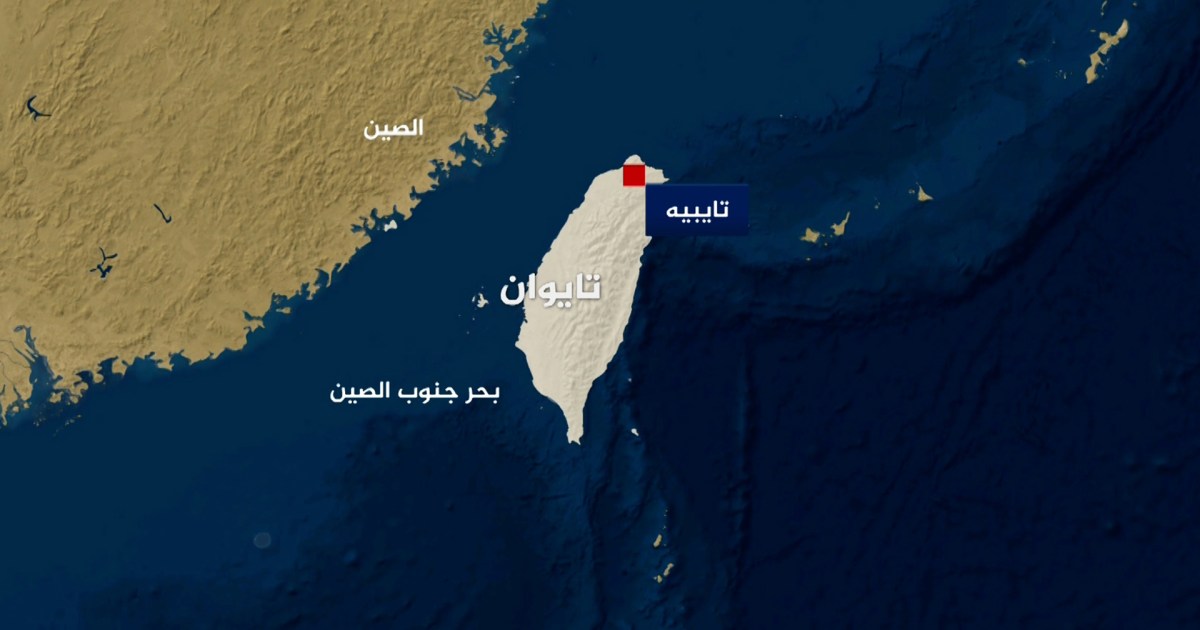The British newspaper (The Times) published an overview of the history of tensions between China and Taiwan, against the backdrop of the visit of US House Speaker Nancy Pelosi to the island last Monday, despite Beijing's repeated warnings, which it described as a threat to its sovereignty.
As for how the rule of Taiwan became separate, the newspaper reported that at the end of the Chinese Civil War, when the Communists of Mao Zedong overran the Chinese Nationalist Party (KMT), the ruling party in Taiwan - anti-communist and calling for Chinese unity - which was headed by Chiang Kai-shek, The defeated leaders fled to Taiwan, the last remaining territory under their control.
In October 1949 Mao proclaimed the founding of the People's Republic.
But when he was preparing to invade Taiwan the following year, the Korean War broke out and he turned instead to the defense of his communist ally in the northeast.
The Kuomintang retained the name of the Republic of China, which remains the official identity of Taiwan, which the United States recognized as the national government until 1979. Washington then transferred its recognition to Beijing in 1979, officially severing relations with the "Republic of China" (ROC), Although it maintains a representative office there.
The newspaper pointed out that Beijing, Taipei and Washington have been trying for decades to maintain the status quo in the Taiwan Strait, with China refraining from attacking Taiwan and not declaring its independence.
In 2015, Chinese President Xi and then Taiwan President Ma Bing-jeou held a historic meeting in Singapore.
But the election of Tsai Ing-wen in 2016 infuriated Beijing because she comes from the Democratic Progressive Party (DPP) who opposes unification and makes clear that she prefers declaring independence, even though she has not.
After taking office, Tsai refused to recognize the one-China principle, under which Beijing claims sovereignty over the island.
Since then, Beijing has sought to punish the island by co-opting Taiwan's allies and isolating the island internationally, the newspaper added.
In September 2020, Beijing began routinely flying warplanes to the island's air defense identification zone, a move aimed at applying military pressure on Tsai's government.
Regarding the recognition of Taiwan, the Times indicated that only 13 countries officially recognize it: Belize, Guatemala, Haiti, Honduras, the Marshall Islands, Nauru, Palau, Paraguay, "St. Kitts and Nevis", Saint Lucy, Saint Vincent, the Grenadines, Tuvalu and the Vatican.
But Taiwan has unofficial relations with dozens of countries, and its biggest ally is the United States, which has strengthened its support in the face of Beijing's growing threats, and many European countries are working to strengthen relations.
In a sign of the importance of Taiwan's independence, the newspaper hinted that the Tsai administration has no plan to declare independence, and the United States does not encourage the idea because it will inevitably anger Beijing and may start a war.
There is also a strong argument in Taiwan that there is no need to declare independence because the island is in fact already sovereign, even if it is not recognized.
Independence or not, what the 23 million people in Taiwan want most is greater recognition among international bodies right now.

